The German cockroach is the most important cockroach in the United States. It is found in homes, apartments, restaurants and other places where food is prepared or stored. The entire life cycle from egg to adult usually takes about three months.
Adult Male
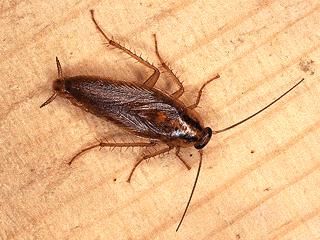
The adult male is 5/8" (1.6 cm) long and is pale-brown or tan with two stripes on the pronotum. The male's abdomen is slimmer, yellower and more tapered to the tip than the female's. The wings of the male extend almost to the tip of the abdomen. Males court females by raising their wings above their abdomens, exposing a dorsal gland. Females eat the secretion from the gland.
Adult Female
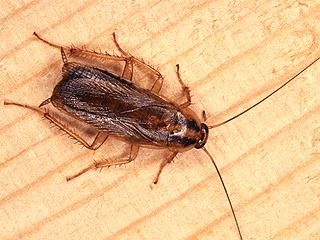
The adult female is also 5/8" (1.6 cm) long and is a darker brown than the male. The female's abdomen is broader at the tip than the male's, and the wings extend just beyond the tip. Adult cockroaches live about half a year; males and females are usually found in equal numbers.
Female With Ootheca (Egg Capsule)
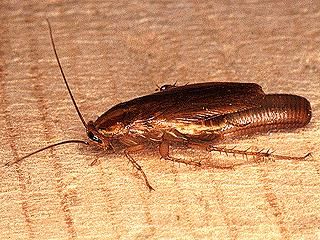
The adult female develops an ootheca about 11 to 12 days after becoming an adult. The female carries the ootheca for about three weeks, until it is ready to hatch. Eggs in oothecae removed from females dry out and do not develop. The female provides moisture to the developing embryos through a porous area of the ootheca where it is attached. A female can develop five to eight oothecae during her life.
Ootheca (Egg Capsule)
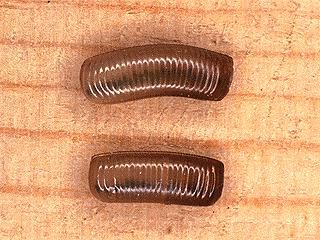
It is 3 mm wide, 8 mm long and segmented. Each segment of the ootheca contains two eggs; each ootheca usually has 30 to 40 eggs. Mature embryos in the egg capsule are almost ready to hatch when a blue-green line can be seen through the ootheca. Egg capsules usually will not hatch if they are removed from the female.
Ootheca Hatching
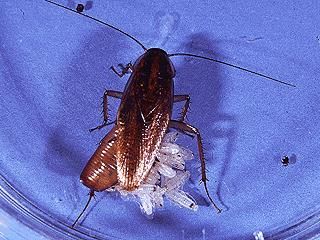
When mature, the first instar nymphs in the ootheca force the ootheca to rupture and crack open at the keel. About 30 to 40 white first instar nymphs emerge from the cracked ootheca. At first, they remain with the ootheca and wait for their cuticles to harden and become dark. Then they move into small cracks and crevices.
First Instar Nymph
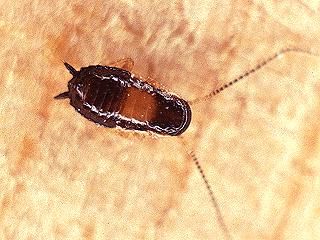
It is 3 mm long and dark-gray to black with a pale-brown band on the second and third thoracic segments. In later instars, the pale band becomes narrower. These young nymphs strongly aggregate and are usually found in large numbers.
Third Instar Nymph
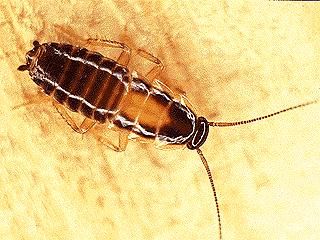
It is about 6 mm long and dark-brown to black. A light band extends from the pronotum behind the head to the abdomen. This separates two long dark streaks characteristic of German cockroaches. The edges of the thorax are almost clear.
Sixth Instar Nymph
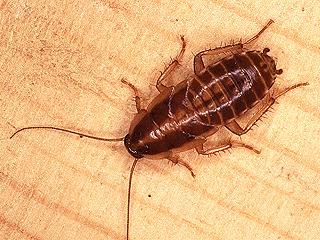
It is about 10 mm long and almost black. The light median stripe is very narrow and the edges of the thorax are clear. The abdomen is almost completely black. These large nymphs are considered the dispersal stage, which emigrates to new habitats and begins new infestations.
Newly Molted Adult
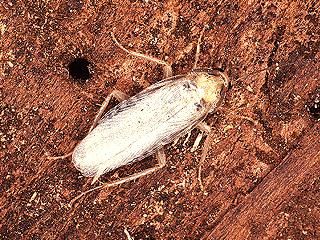
Completely white nymphs or adults are often seen in heavily infested apartments. These are newly molted individuals whose cuticles have not had time to harden. Normally the darkening process requires about two to four hours.
Cockroach Infestation
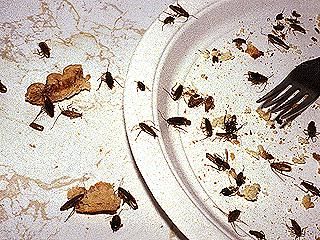
Cockroaches aggregate in places where food, water and harborage are abundant. They prefer cracks that are 3/16" (5 mm) wide. They usually are found in kitchens or bathrooms of houses and apartments, restaurants, hospitals, and hotels. Surveys of low-income apartments have found more than 10,000 cockroaches per apartment.